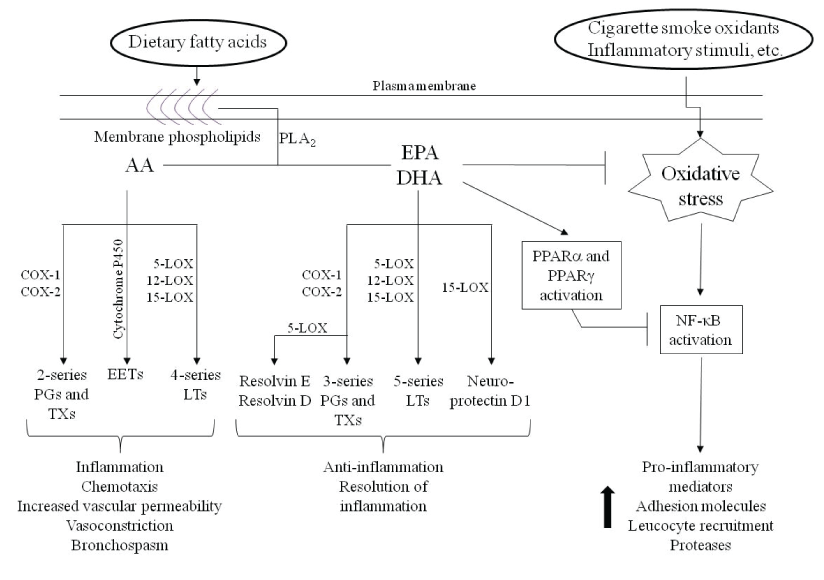
EET: Epoxyeicosatrienoic acids; LT: Leukotriene; PG: Prostaglandin; PLA2: Phospholipase A2; PPAR: Peroxisome Proliferator Activated Receptor; ROS: Reactive Oxygen Species; TX: Thromboxanes
 |
| Figure 2: Metabolism of n-3 PUFA versus n-6 PUFA by cycloxygenase (COX) and lipoxygenases (LOX) and anti-inflammatory mechanisms of n-3 PUFA. Increased
consumption of long-chain n−3 PUFAs, such as eicosapentaenoic acid (EPA; 20:5n-3) and docosahexaenoic acid (DHA; 22:6n-3), results in increased incorporation
of those fatty acids in inflammatory cell phospholipids, in part at the expense of arachidonic acid (AA; 20:4n-6). EPA and DHA metabolism via COX and LOX
generates eicosanoids with low inflammatory and pro-resolving effects compared with those derived from AA. In addition, n-3 PUFA reduces the activation of
intracellular inflammatory signaling pathways, by quenching ROS formation and by activating the nuclear receptors PPAR, that in concert result in the inhibition of
NF-κB, a transcription factor crucially governing the expression of inflammatory genes. EET: Epoxyeicosatrienoic acids; LT: Leukotriene; PG: Prostaglandin; PLA2: Phospholipase A2; PPAR: Peroxisome Proliferator Activated Receptor; ROS: Reactive Oxygen Species; TX: Thromboxanes |